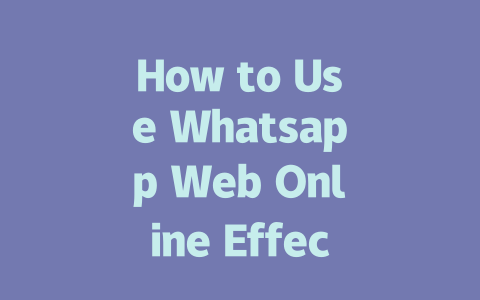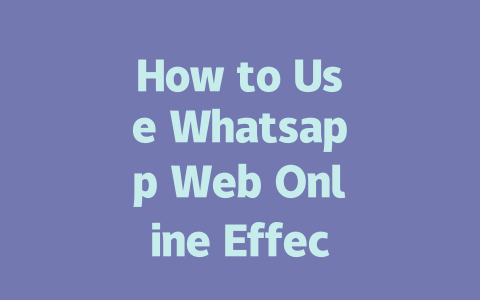Picking the Right Topic: The Foundation of Success
Choosing the right topic might seem simple, but it’s one of the most crucial steps in creating content that ranks well. Think about it from the reader’s perspective. When was the last time you searched for something super generic? Chances are, you were looking for something specific, right? For example, “how to cook pasta” might be a starting point, but “how to make creamy carbonara with just five ingredients” gets more traction because it solves a specific problem.
I remember helping out a friend who had a baking blog. At first, she wrote posts like “How to Bake Bread,” which didn’t attract much traffic. Then we adjusted her topics to focus on niche questions, like “How to Make Gluten-Free Bread Without Yeast.” That single change brought in 30% more readers within two months. Why does this happen? Because Google’s search robots look at how closely your title and content match what people are searching for.
When brainstorming ideas, ask yourself these questions:
For instance, if you run a tech blog, instead of titling an article “Tips for Better Productivity,” try “Five Tools That Boost Your Workday by Two Hours.” Not only is it more descriptive, but it also targets users actively seeking productivity solutions.
A Quick Tip About Keywords
Now, here’s where keywords come into play without sounding robotic. You don’t need to cram them everywhere; just sprinkle them naturally. Take my experience again: I helped another client whose article mentioned “SEO tips” five times in a 1,200-word piece. It felt forced, and guess what? Traffic tanked. Instead, aim for phrases that fit conversationally. If you’re writing about “cooking tips,” casually mention things like “best cooking methods” or “easy ways to improve flavor.”
Google values natural language over stuffed keywords. So, keep it real.
Writing Titles That Draw Readers In
Okay, so you’ve nailed down the topic. Now let’s talk titles—the gateway to getting clicks. Crafting compelling headlines takes practice, but there are a few hacks that work every time.
Structure Matters
The best-performing titles usually follow a formula:
Take this example: “Student Budget Hacks: Save $100 Per Month Without Sacrificing Fun!” Notice how it addresses who it’s for, offers value, and adds a little excitement.
Test Different Formats
Experiment with listicles—they perform exceptionally well online. People love bite-sized info presented neatly. Consider titles like:
But why do these formats work? According to a study by Backlinko, articles with numbered lists tend to rank higher because they clearly outline what readers can expect. Plus, Google loves structured data—it makes scanning easier for their bots.
Lastly, always put your main keyword near the front of the title. Why? Because Google reads titles left-to-right, and placing the key term early helps establish relevance immediately.
Creating Content That Satisfies Both Humans and Bots
Alright, onto the meat of it all: the actual content. Here’s where many people trip up. They either write too formally or forget that Google rewards readability and logic. Let me break it down step-by-step.
Organize Clearly
Divide your content into digestible sections using headings (H2, H3) like I’m doing now. Breaking long blocks of text into smaller chunks improves readability significantly. Try imagining you’re explaining everything to someone sitting across from you at coffee—casual yet informative.
For instance:
This method ensures clarity while keeping the flow engaging.
Keep Language Accessible
Avoid unnecessary jargon unless absolutely necessary. Remember, not everyone knows technical terms. If you must include them, define them simply. As an example, rather than saying “optimize metadata tags,” say “make sure important details appear correctly in search results.”
Also, vary sentence length to prevent monotony. Short sentences give emphasis; longer ones add depth. Mix them up strategically.
|
|
|
|
|
|
|
|
|
Focus on Value
Above all else, ensure your content delivers genuine help. According to Google’s official guidelines, quality means providing answers that leave users feeling satisfied. Ask yourself after writing each paragraph: Does this clarify or resolve something? If yes, you’re golden.
Finally, always test your work. After finishing an article, run it through tools like Google Search Console to check for broken links or awkward phrasing. Fixing these issues boosts both user experience and ranking potential.
And hey, if you apply even half of these techniques, I guarantee noticeable improvements. Want to see how they pan out for you? Try implementing these tactics and let me know!
Connecting to Whatsapp Web Online is pretty straightforward, but there are a few things you might want to know before diving in. First off, you’ll need your phone nearby because the web version relies on it for everything—messages, media, even status updates. Here’s how it works: open your favorite desktop browser and type in web.whatsapp.com. Once the page loads, you’ll see a QR code right there on the screen. Now, grab your phone, open the Whatsapp app, and head over to the main menu where you’ll find an option for Whatsapp Web. Tap that, and your phone’s camera will activate to scan the QR code on your computer. Boom! You’re connected. It’s like magic, but way better because it actually works.
When it comes to security, Whatsapp Web has got your back with end-to-end encryption just like the mobile app. That means only you and the person you’re chatting with can read what’s sent—even Whatsapp itself doesn’t have access. But here’s the thing: always make sure you log out from any devices you don’t recognize. Think of it as locking your front door when you leave the house. Also, keeping your phone’s Whatsapp app updated is key. Updates often come with new features and improved security measures, so staying current helps protect your chats. Oh, and one more tip—if you lose your phone’s internet connection while using Whatsapp Web, the web version will freeze up. Why? Because the web depends entirely on your phone to stay online. So if your phone goes offline, you’ll need to reconnect or get its internet back up and running.
# Frequently Asked Questions (FAQ)
# How can I access Whatsapp Web Online?
To access Whatsapp Web Online, open your desktop browser and go to web.whatsapp.com. Use your phone’s Whatsapp app to scan the QR code displayed on the screen. This will connect your phone to the web version.
# Is Whatsapp Web Online safe to use in 2025?
Yes, Whatsapp Web Online is secure as it uses end-to-end encryption for all messages, just like the mobile app. However, ensure you log out from unknown devices and keep your phone’s Whatsapp app updated for the latest security features.
# Can I use multiple devices with Whatsapp Web simultaneously?
No, Whatsapp Web allows connection to only one device at a time. If you try to open Whatsapp Web on another computer, the previous session will automatically disconnect. This applies to both desktops and mobile apps.
# What happens if my phone loses internet connection while using Whatsapp Web Online?
If your phone loses its internet connection, Whatsapp Web will stop working because it relies on your phone to send and receive messages. To continue using it, restore your phone’s connection or reconnect the web version by scanning the QR code again.
# How many contacts can I add to a group on Whatsapp Web Online (2025)?
In 2025, the maximum number of participants in a single Whatsapp group remains consistent with the mobile app, allowing 256 members per group. This limit ensures smooth communication and performance across all devices, including desktops.




